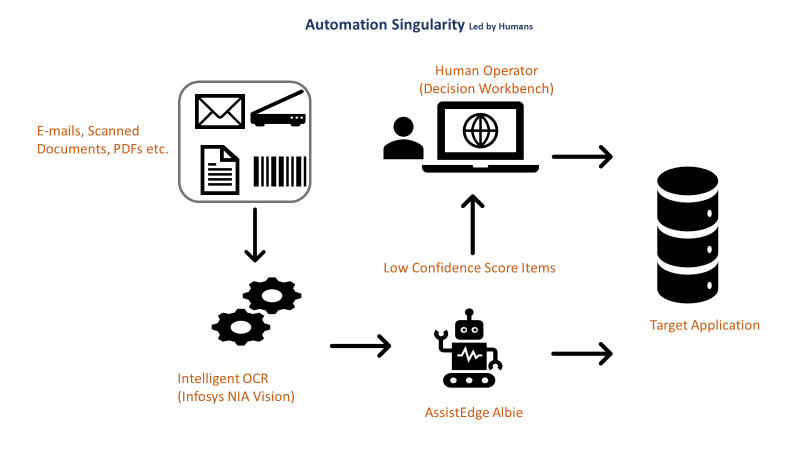Over a last couple of months, we have been witnessing an overwhelming humanitarian crisis unfold.
A crisis, likes of which the world has not seen in the modern digital world. The analysts globally are quick to acknowledge the detrimental impact this event may potentially have on the world economy. According to a report by McKinsey, countries across the globe are staring at GDP degrowth of 6 to 12% and for most a countries recovery is estimated to happen not before 2021 Q2. At the ground level, people’s ability to pay bills and their loans on time will get impacted
Amidst extended global lockdowns aimed at stopping further spread of the virus, economic activities are severely impacted at an unprecedented scale. We all do see an array of prompt and proportional response to the impending economic crisis at all levels: the governments are infusing Trillions of $s worth bailout packages, the federal reserve are reducing their target rates / guidance values, the regulators are offering leniency to the lenders / banks in terms of reporting delinquent debts.
In this time of dire need, a measured response from the lenders is going to define lenders’ relationships with their customers and can potentially generate a lifetime of loyalty.
Governments across the world are issuing relief packages e.g. CARES Act (approved by US congress) that aim to provide timebound protection against foreclosures action and offer right to forbearance for federally backed Mortgages and Student loans. Reacting to the situation, many lenders have declared that they would work constructively with the borrowers to assign suitable assistance programs based on specific needs. While this is a great gesture, a few operational challenges lay ahead of them:
Given these daunting challenges how can lenders convert a potentially adverse situation into customer delight?
Customer needs, A good place to start!
As a side effect of this disastrous event, people’s earning capacities will be impacted. However, this is unlike any other situation that we have witnessed in past, both in terms of severity and proportions.
To be able to assign a suitable assistance program, lending institutions need to first look at broad segmentation based on the magnitude of impact on their earning capacities. Here’s an example of segmentation based on industries where customer is employed and the amount of time it will take to bounce back for pre-Covid-19 times:
Engage customers and offer right assistance program
Identifying the customer segmentation is the first step in the right direction to offer personalized help to the borrowers. Once an incumbent account is segmented, the assignment of assistance program can be done based on the alignment of the internal business and legal teams.
A sample segmentation and their program assignment is illustrated in the table below
| Customer Segment | Past Behavioral / Propensity Score | Past Credit Risk | Assistance Required | Industry Risk | Recommended Remedial Action |
| Segment 1 | High | Low | During the lockdown period | Low | Deferred payment, Fee waivers etc. |
| Segment 2 | High | Low | 0 – 6 Months | Medium | Moratorium, Deferred Payments / Payment plan |
| Segment 3 | High / Medium | Medium / Low | 1 year of longer | High | Restructure / Go through regular collection process |
| Segment 4 | Low | High | NA | NA | Go through regular collection process |
Looking to Artificial Intelligence (AI) to rescue
Correct Identification of such customer profiles requires evaluating a large number both traditional and nontraditional user attributes. In addition, it is fair to assume that there will be large volumes of such requests coming in. Processing all such request manually is going to be humanly impossible.
As shown above, propensity to pay (behavioral score) is an important element in recommending the right remedial actions, especially for the customer segments 1, 2 and 3. Traditional risk models, are incapable of sifting through the Giga bytes of unstructured data and extract the behavioral profiles of the customers.
Advanced text analytics and machine learning techniques have proved to be highly effective in evaluating and quantifying qualitative aspect as such. Swift assignment of appropriate programs to assist the borrowers in this time of need will enable lenders to build a strong and lasting bond with their customers
Accurate risk segmentations using AI models can also benefit lenders and collection agencies in identifying self-cure customers, who form the large part of the delinquent portfolio. This allows the call calories to be directed to the riskier account and result in higher resolution of more difficult accounts. Furthermore, advanced text analytics techniques can automatically pick important follow-up actions that an operator may forget to note due to the pressure of handling spike in inbound call traffic.
FinXEdge offers a suite of AI based business applications that are specifically built to solve the problems mentioned in this blog. Download our whitepaper to understand how to collect effectively without affecting the customer experience, by embracing AI
For more details visit – https://www.edgeverve.com/finxedge/finxedge-collect/ or schedule a consult to engage with an expert (Link – https://www.edgeverve.com/finxedge/finxedge-collect/#meeting)
